Three years before the world got its hands on the iPhone, I used a payphone for the only time in my life. I was homesick, calling my family from Grade 7 camp at Maple Ridge’s Timberline Ranch. It was the only opportunity I would have to experience the ritual of standing in a foreign place clutching a cold receiver in the dark, dialling a number from memory and warming at the sound of a familiar voice.
We in Vancouver who came of age in the 2000s could recite a few key phone numbers — parents’ workplaces, grandparents, best friends, Blockbuster Video, Samurai Sushi for takeout — even as mobiles got smarter and went with us to bed.
Payphones, on the other hand, were unremarkable urban wallpaper.
Adam Levine in “Payphone” may just as well have been singing about Stonehenge to those younger than me with no memory of an analog world.
The Canadian Radio-television and Telecommunications Commission (CRTC) has tallied the payphone extinction across Canada: they numbered 185,000 in 1998 and plummeted to 57,542 in 2016.
Bell’s number of payphones, mostly in the eastern half of the country, dropped from about 50,000 five years ago to 30,000. Twelve of its 30,000 remain in the city of Vancouver, all indoor.
Telus has around 8,000 in Canada, mostly in B.C., Alberta and Quebec, with 336 in Metro Vancouver.
“There are many payphones that will go days without a single call being placed,” Telus spokesperson Liz Sauvé told me.
Such is the nature of our tech: rapid evolutionary replacement. My Magic Bullet®, for example, no longer seems quite like a “personal, versatile kitchen magician.”
But payphones aren’t entirely extinct in Vancouver, nor are they obsolete for those who use them. Stanley Q. Woodvine knows this, and is on the hunt for surviving specimens.
Woodvine, 57, a Fairview resident who’s been homeless for 14 years, is a keen chronicler of the city. He blogs regularly, with selections republished by the alt-weekly the Georgia Straight.
“I care very much about the neighbourhood I live in,” said Woodvine. “Homeless people are remarkably conscious of their environment, and that’s what I write about, that point of view. Homeless people are the other group of people besides children who have the time to stop and look at the clouds.”
And apparently, at payphones.
Three years ago, Woodvine wrote about payphones as part of our urban ecology when, in his words, “a crack team of… well, crackheads possibly, assailed one of the last payphones in the Fairview neighbourhood and put it out of commission — for, like, the 8,000th time.”
Aside from payphones’ lack of use, Woodvine says this speaks to two fears fuelling landlords’ removal of payphones — that they are magnets for drug deals and vandalism.
Last week, Woodvine launched an urban experiment: a crowdsourced map of the city’s remaining payphones.
He was surprised by how many people knew where payphones were along their daily commutes, and by the number of photographs and coordinates he received. Residents outside urban centres were particularly affectionate about their nearest payphone.
“The Internet has dissected every Pokémon character in history,” he said. “So I guess there’d be people out there would care about payphones.”
Perhaps payphones aren’t like wallpaper anymore, and the times have made them curiosities. Some surviving phone booths or kiosks, now out of service, have been adapted for new uses like little neighbourhood libraries.
“People are clearly not blacking out payphones,” said Woodvine. “They’re not like panhandlers that you edit out of your view.”
I also joined the scavenger hunt, which proved to be quite addictive because of the elusiveness of payphones.
I was able to locate many payphones with Google’s 360-degree Street View tool, but the images turned out to be dated. If you view the most recent streetscape images, phone booths will vanish from Vancouver’s gas stations and street corners before your eyes, like the TARDIS from Doctor Who, often leaving square, concrete footprints in their place.
Woodvine had a similar experience when he visited the former site of a phone booth on Granville Island.
“You could see the flat indentation where the booth had been and was stuck on a pole,” he said, “and there was a guy leaning up against the pole — talking on his cellphone.”
As it turns out, Woodvine’s crowdsourced map of payphones is probably the best resource out there.
Telus declined to share the exact locations of its 336 Metro Vancouver payphones with me, citing privacy, as many are on private property. Bell was willing to reveal the locations of its 13 payphones, though only in Vancouver proper, but when I visited one of them at a Petro-Canada station it too had disappeared, with a sad footprint where it once stood.
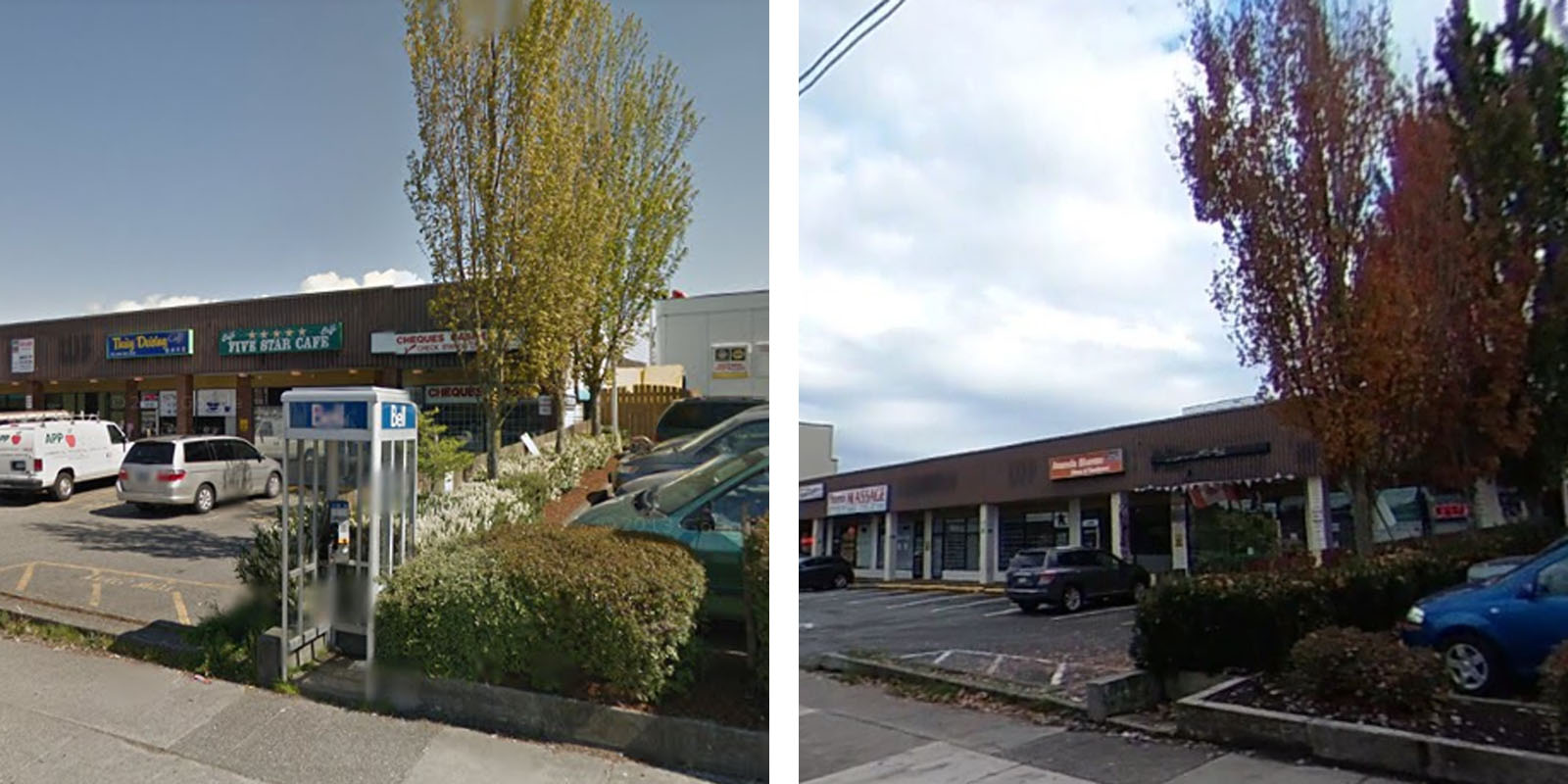
WiMacTel did not respond to my inquiries. OpenStreetMap proved to be severely outdated. TransLink was more forthcoming, sharing the locations of the 26 payphones on its property, 16 of which are outside fare gates.
This, said Woodvine, is very important for allowing homeless or low-income people to access the phones. A CRTC report from 2015 found that low-income people are the most frequent users of payphones.
One service for the phoneless homeless is a program run by the Lu’Ma Native Housing Society, which has offered 2,000 people phone numbers and voicemail so that they don’t miss out on connecting with family and friends, as well as employment, housing and social service opportunities.
Woodvine said many homeless people have trouble hanging onto their mobile phones, and those who are more successful often run out of monthly minutes. This is a big blow especially for welfare clients who might be called by case managers or other officials.
When Woodvine asked some of his peers about the locations of payphones they use so he could add them to the map, they were secretive.
“To be blunt, some are using payphones because they need to make calls a couple of times a day to buy drugs.”
I wonder how much the telecoms know of this chatter that goes on.
Even with the addresses of payphones Woodvine has acquired, their exact locations — if they haven’t been removed — can be hard to find. His map revealed a payphone on a mosque’s property hidden behind a tall hedge, and another tucked in the middle of residential Marpole by the side of a walk-up apartment building.
I decided I had to see these things for myself and pay tribute in person, like standing in the presence of the monolith from 2001. I wasn’t interested in the payphones hanging around high-traffic hotels or libraries. I wanted to find the lonely ones that would be there the middle of the night, helping folks get out of a pinch.
Here’s my short field guide to payphones in Vancouver, compiled in the hours around a recent midnight.
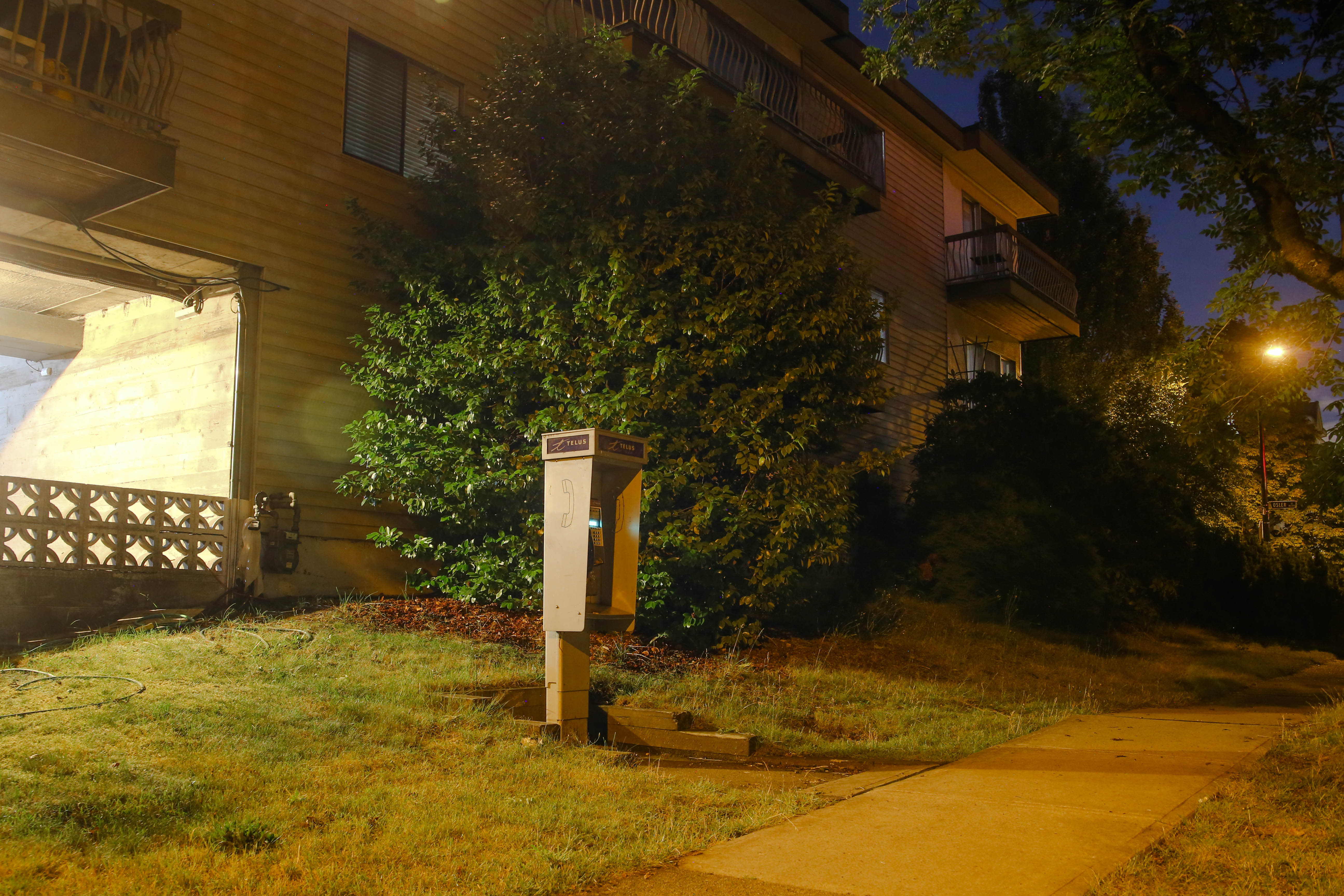
Property: Walk-up rental apartment
Location: 8678 Osler St., south side
Provider: Telus
Number: 604-261-9815
Type: Standalone kiosk
Weather protection: None
Public intervention: Sharpie. “Yod was here”
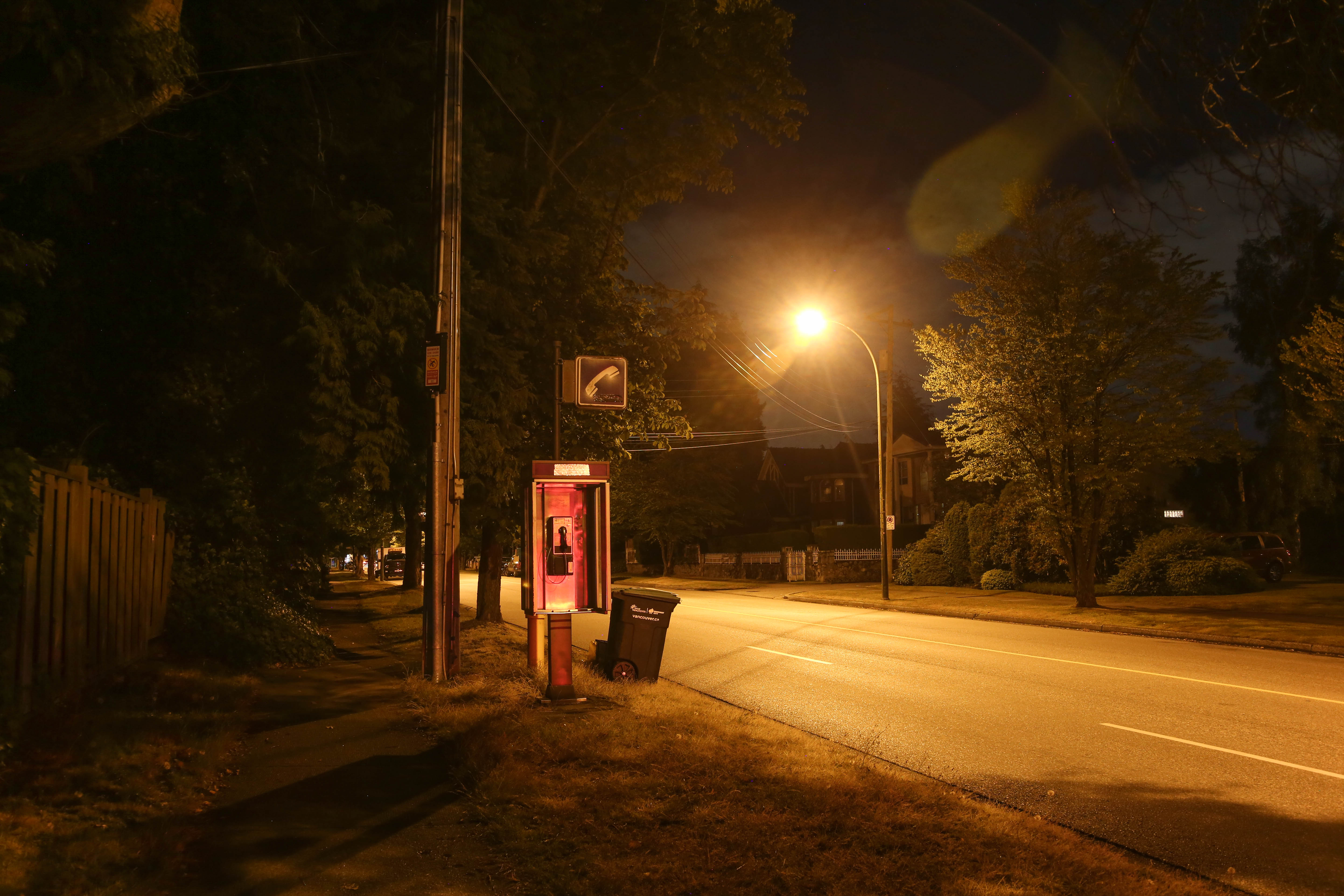
Property: City boulevard
Location: West 49th Avenue, between Granville and Selkirk Streets, north side
Provider: Telus
Number: 604-261-9944
Type: Standalone kiosk, with non-functioning light box
Weather protection: None
Public intervention: None
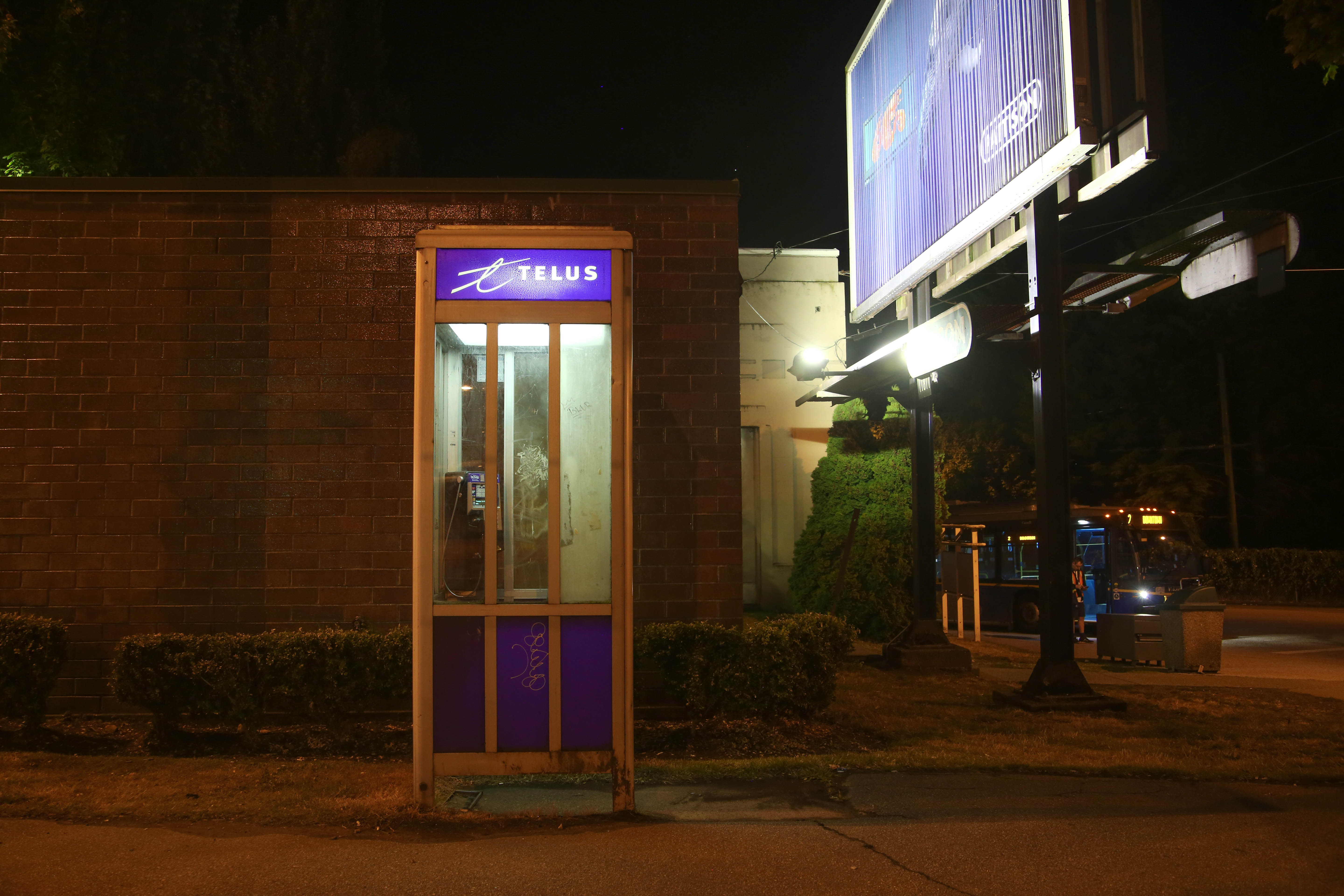
Property: Dunbar Loop
Location: West 41st Ave. between Dunbar and Alma Streets, south side
Provider: Telus
Number: None specified
Type: Standalone booth, with light
Weather protection: Yes
Public intervention: Sharpie. “Hi!”
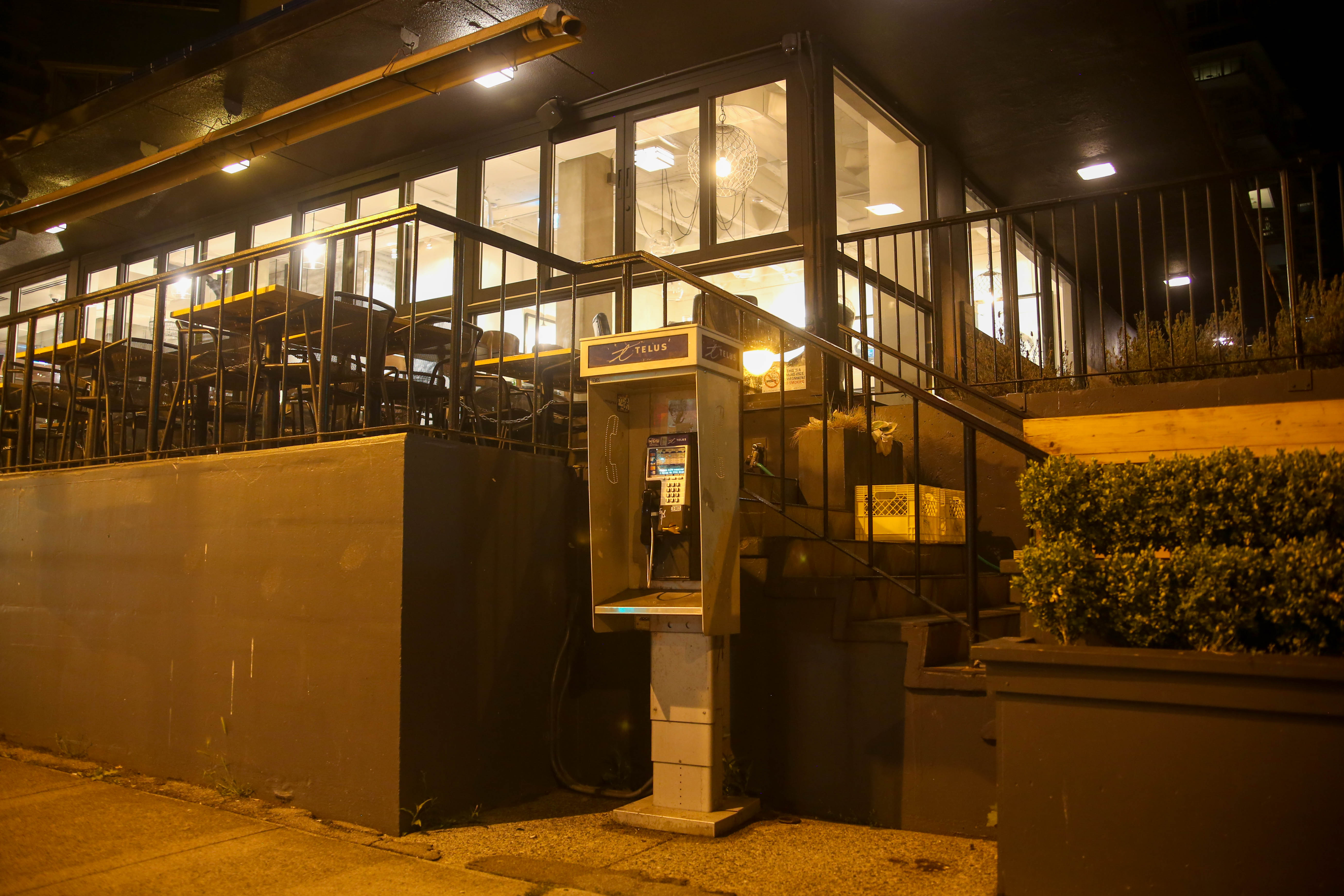
Property: Hook Seabar
Location: 1210 Denman St., corner near Pantages Lane
Provider: Telus
Number: None specified
Type: Standalone kiosk
Weather protection: None
Public intervention: Sticker. “DEMOS”
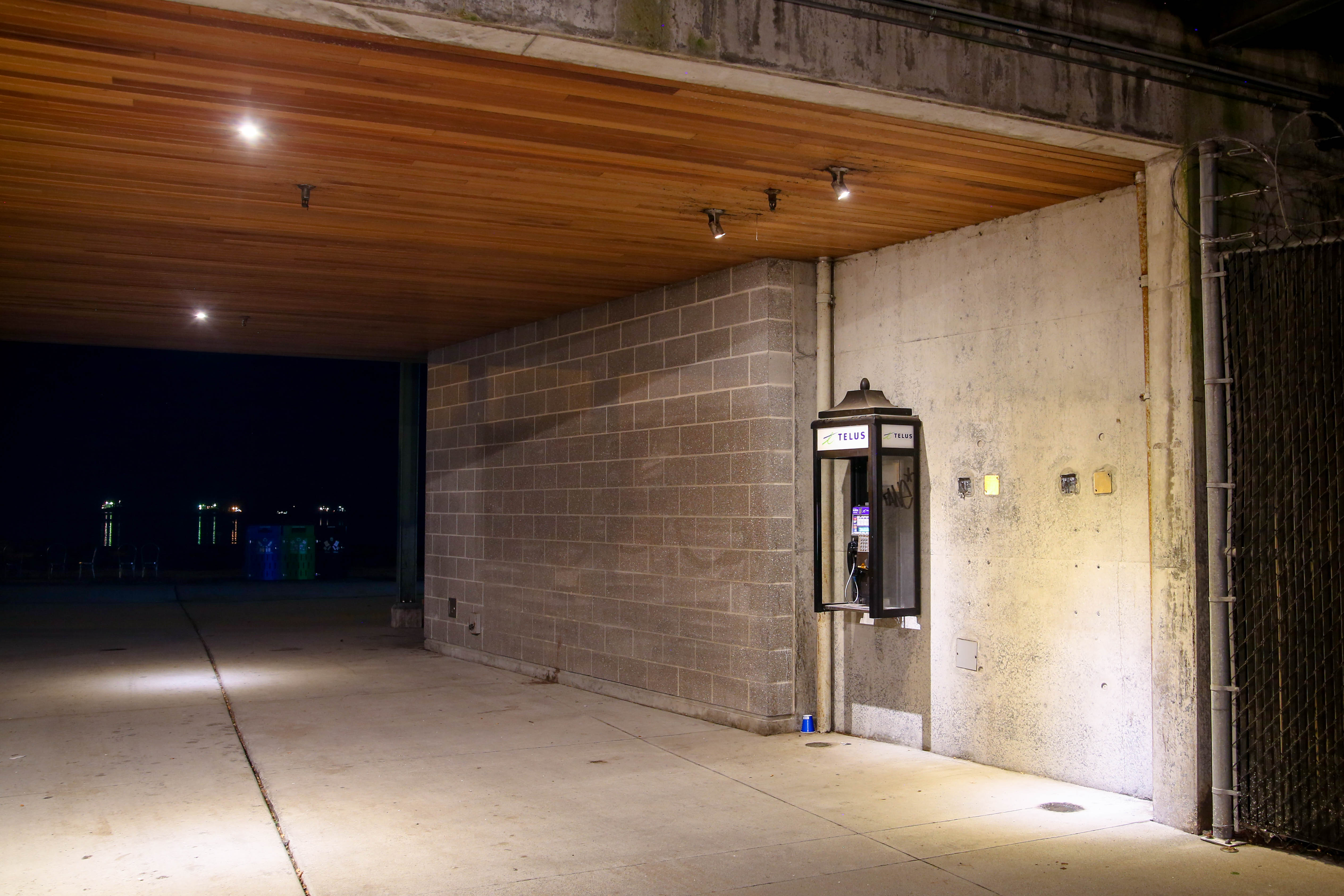
Property: Kitsilano Beach office
Location: 1305 Arbutus St., undercover area
Provider: Telus
Number: 604-737-9735
Type: Standalone kiosk
Weather protection: Yes
Public intervention: Sticker. “FANE*”
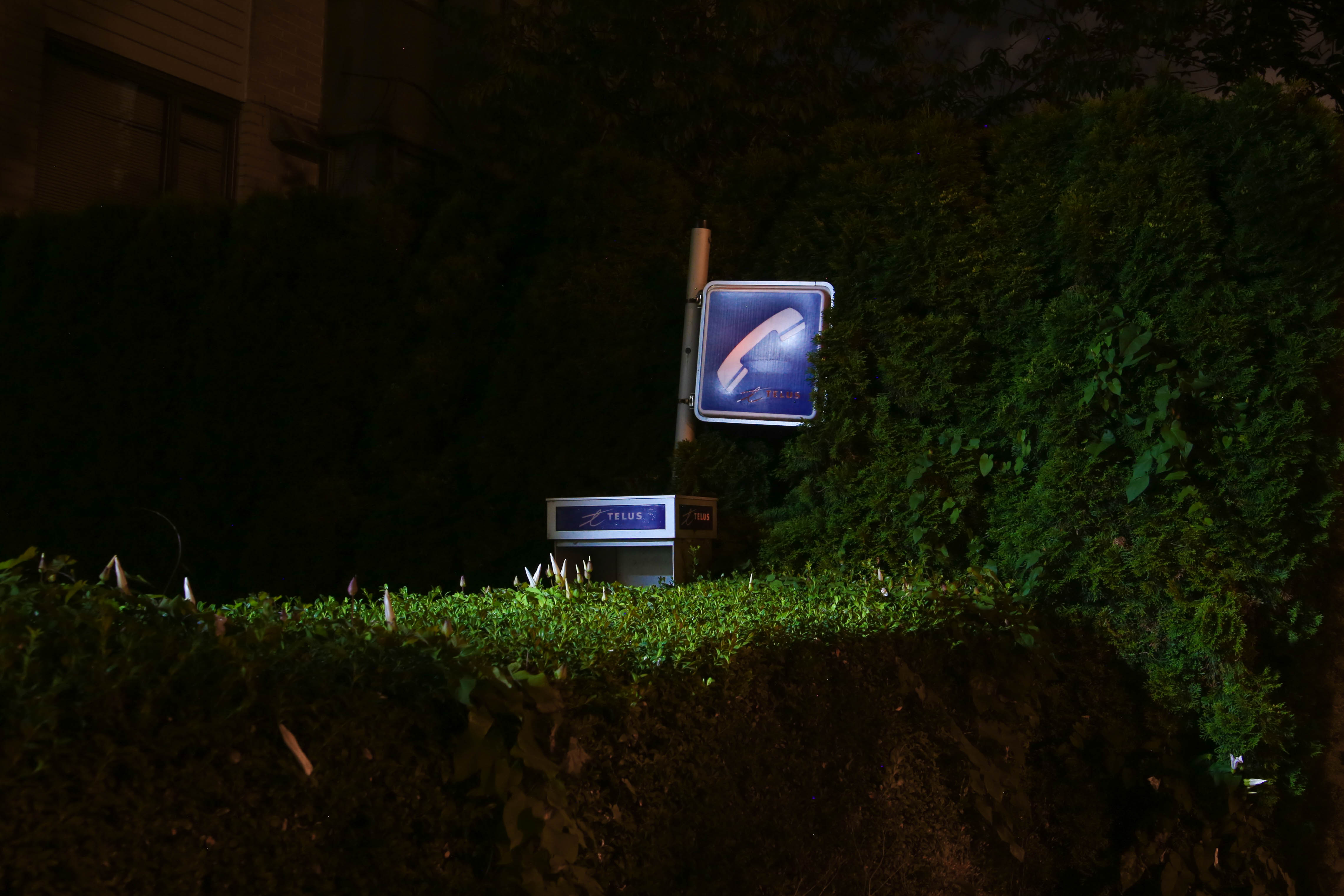
Property: Al-Jamia Mosque
Location: 655 West 8th Ave., southeast corner of property behind a hedge
Provider: Telus
Number: 604-872-9072
Type: Standalone kiosk, with non-functioning light box
Weather protection: None
Public intervention: None, but many spiders
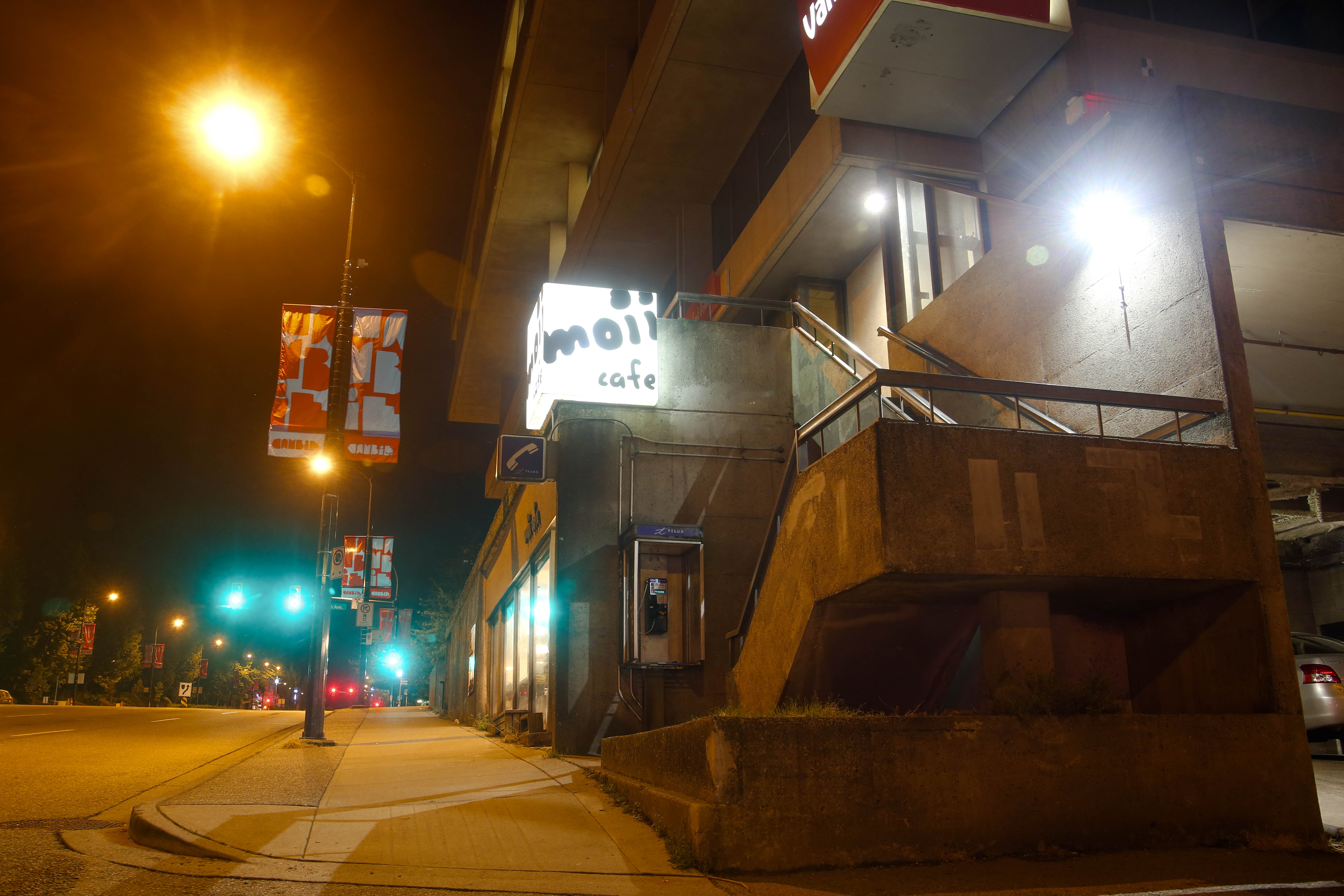
Property: Moii Cafe
Location: 515 West 10th Ave., right of the entrance
Provider: Telus
Number: None specified
Type: Standalone kiosk, with non-functioning light box
Weather protection: None
Public intervention: Sharpie drawing of a clown, ball launcher dog toy left behind
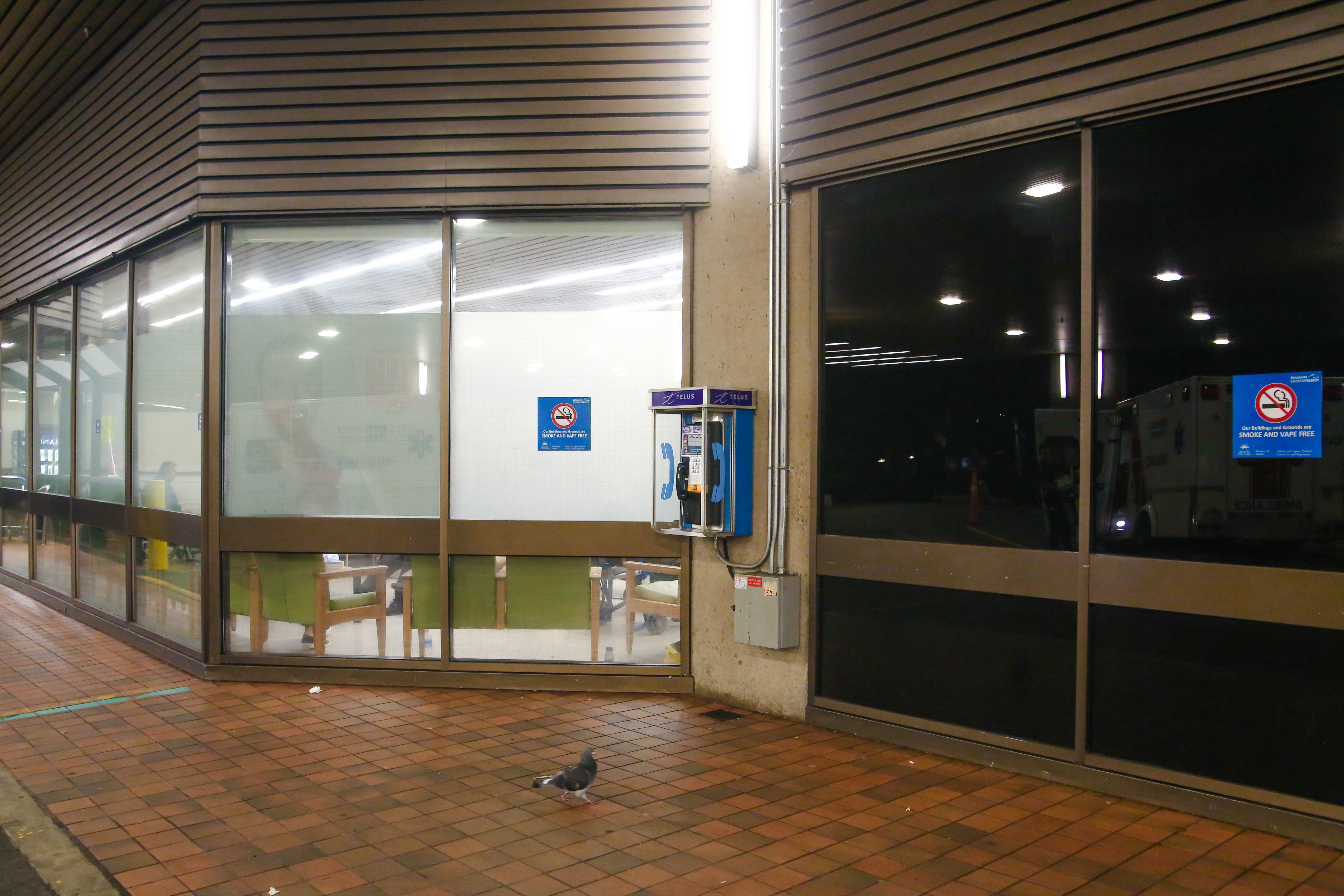
Property: Vancouver General Hospital, Emergency Department
Location: 920 West 10th Ave., right of entrance
Provider: Telus
Number: 604-872-9504
Type: Wall mount
Weather protection: Yes
Public intervention: None, very clean
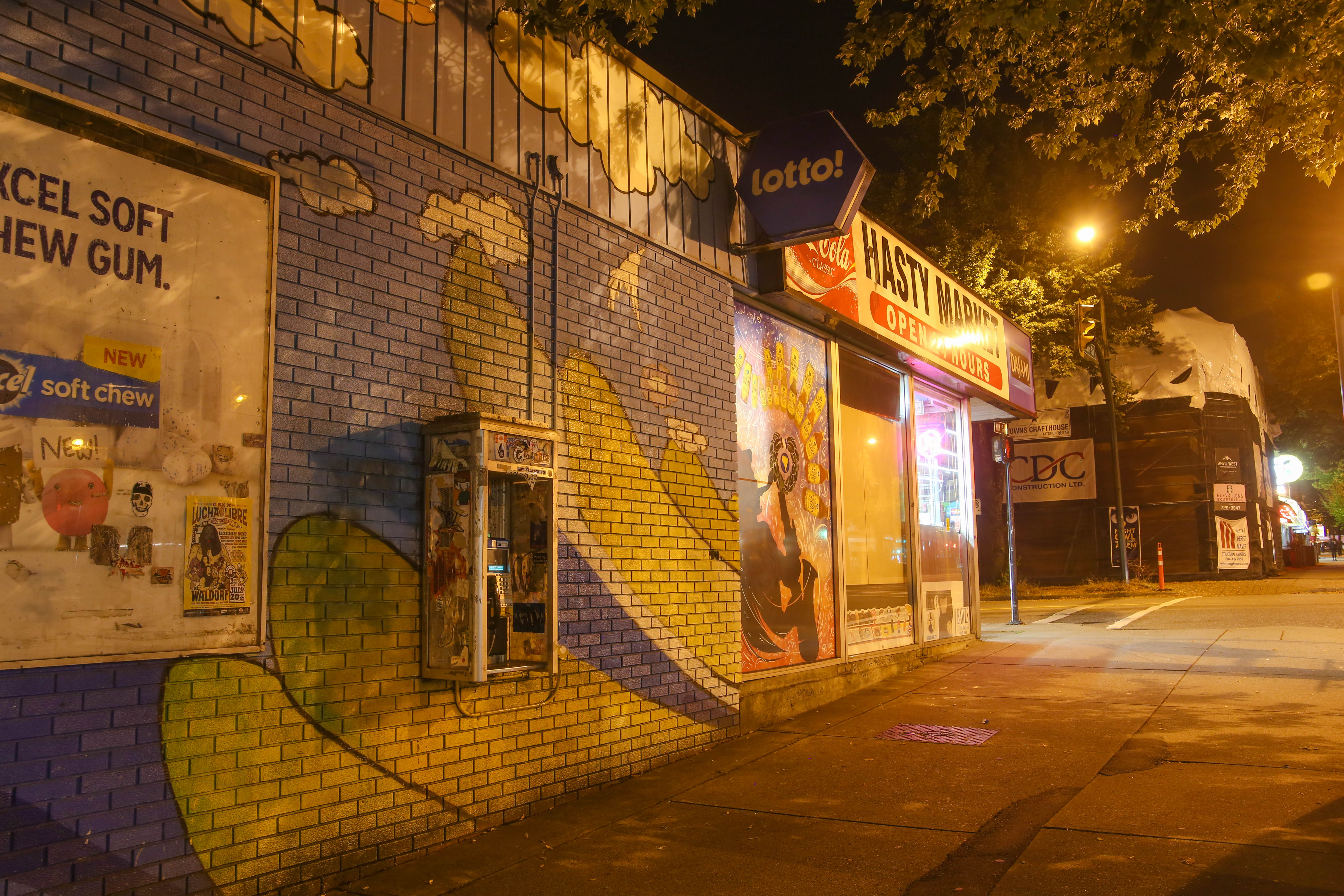
Property: Hasty Market
Location: 3150 Main St., left of entrance
Provider: WiMacTel
Number: None specified
Type: Wall mount
Weather protection: No
Public intervention: Covered in stickers. “I am your density,” “Bikers for autism: look bad, do good”
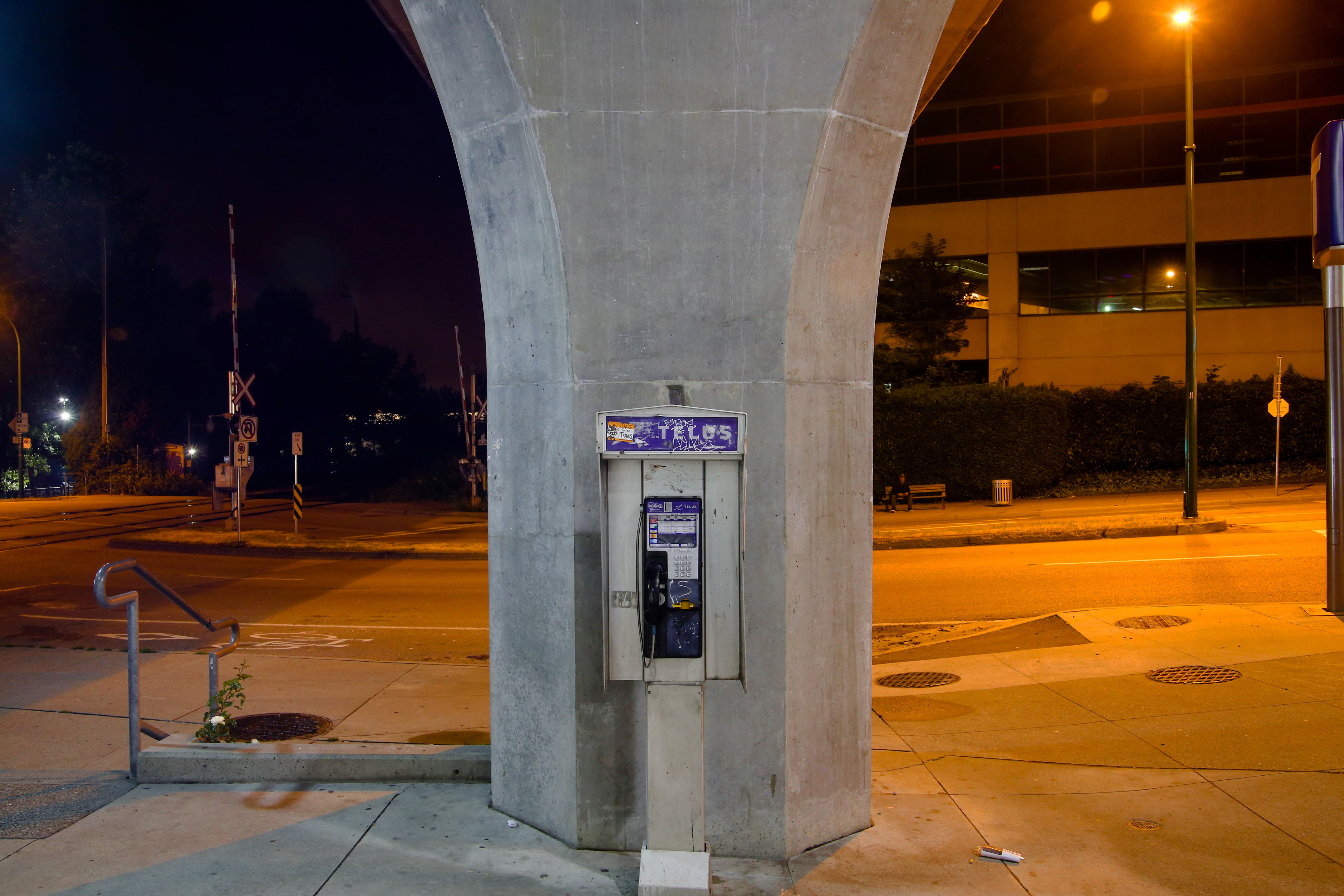
Property: Rupert SkyTrain station
Location: Station on Rupert Street, between Broadway and Grandview Highway. Payphone directly across station entrance against column
Provider: Telus
Number: None specified
Type: Standalone kiosk
Weather protection: Yes
Public intervention: Poster. “File #2018-13528. Colten Fleury. Missing since May 3rd 2018. If seen, please contact Crime Stoppers… Prince George RCMP… Phylis Fleury…” ![]()
Read more: Urban Planning + Architecture



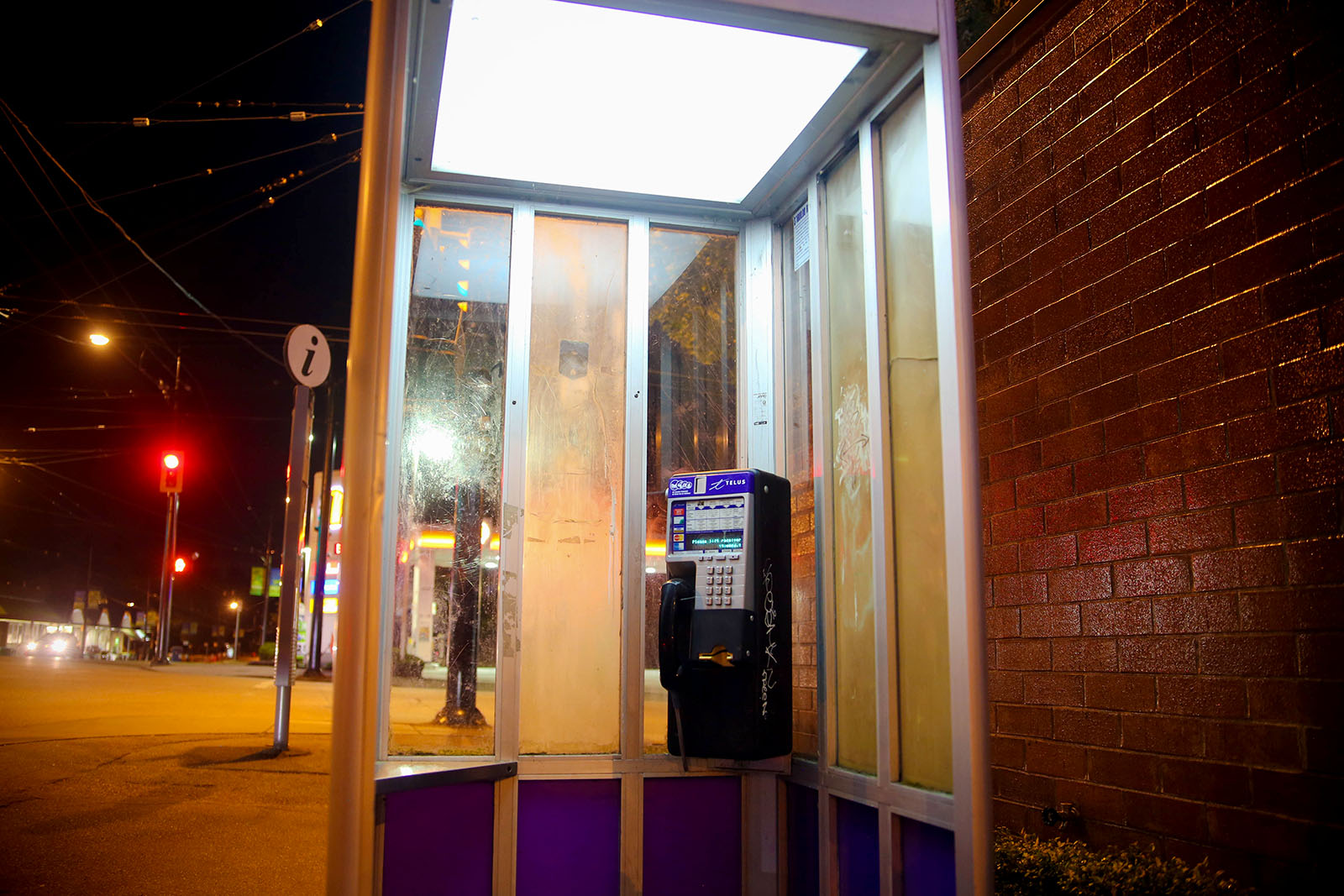












Tyee Commenting Guidelines
Comments that violate guidelines risk being deleted, and violations may result in a temporary or permanent user ban. Maintain the spirit of good conversation to stay in the discussion.
*Please note The Tyee is not a forum for spreading misinformation about COVID-19, denying its existence or minimizing its risk to public health.
Do:
Do not: